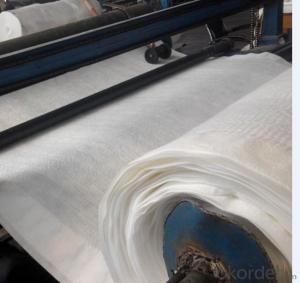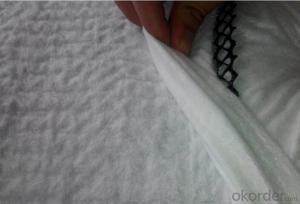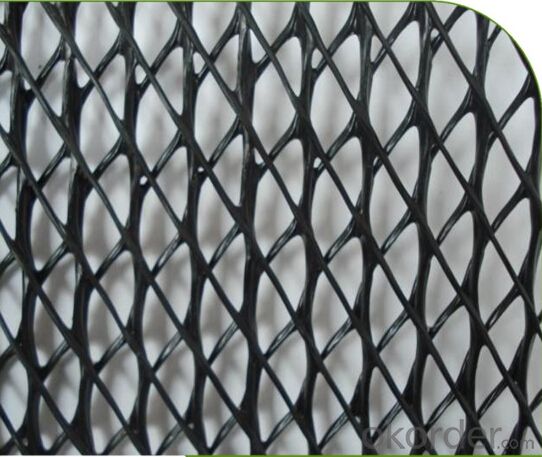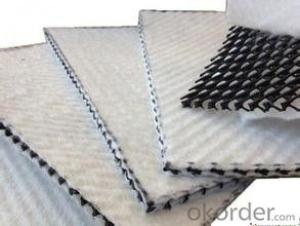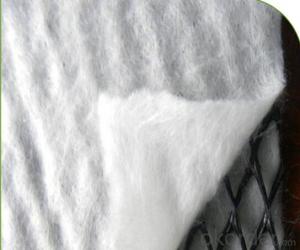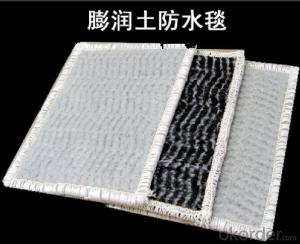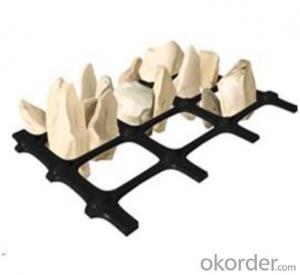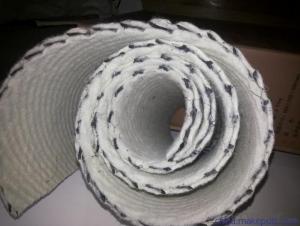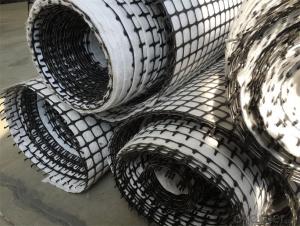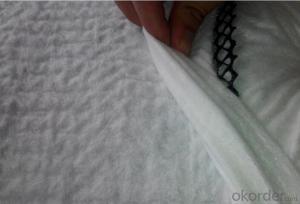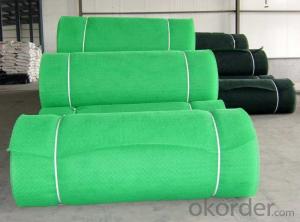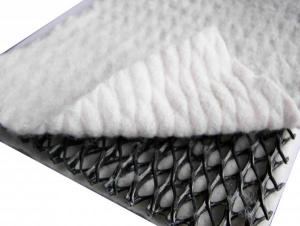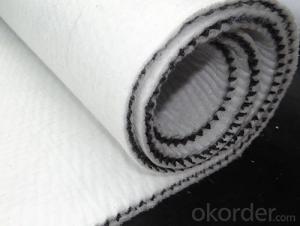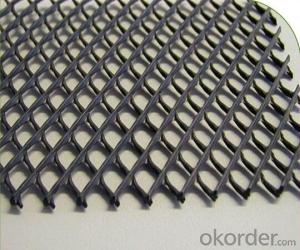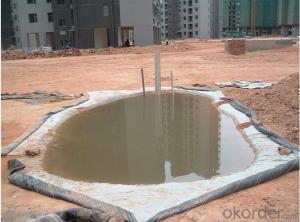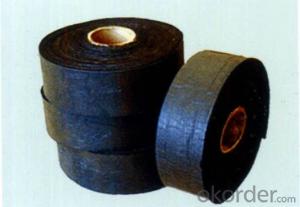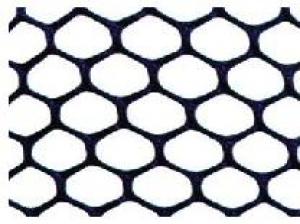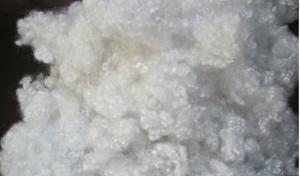Tri Dimensional Composite Drinage Geonet from 750g/m2 to 1600g/m2
- Loading Port:
- Qingdao
- Payment Terms:
- TT or LC
- Min Order Qty:
- 2000 m²
- Supply Capability:
- 200000 m²/month
OKorder Service Pledge
OKorder Financial Service
You Might Also Like
Tri Dimensional Composite Drinage Geonet Introduction:
Geonet-geotextile Drainage Geocomposites are engineered to replace costly, conventional open graded aggregate and/or perforated- pipe subsurface drainage systems. The Geonet-geotextile Drainage Geocomposite is created by laminating a filtration geotextile on one or both sides of a Geonet. Geocomposite Drainages have reached acceptance as state-of-the-practice because they provide sufficient in-place drainage and offer reduced material cost, installation time and design complexity over conventional systems.
Tri Dimensional Composite Drinage Geonet Specifications and technical parameters:
Item | Unit | |||||||
1200g | 1400g | 1600g | 1800g | 2000g | ||||
1 | Compound Weight of Unit Area | g/m2 | ≥1200 | ≥1400 | ≥1600 | ≥1800 | ≥2000 | |
2 | Compound Thickness | mm | ≥6.0 | ≥7.0 | ≥8.0 | ≥9.0 | ≥10.0 | |
3 | Compound Tensile Strength | KN/m | ≥16.0 | ≥16.0 | ≥16.0 | ≥16.0 | ≥16.0 | |
4 | Compound Hydraulic Conductivity | m2/s | ≥1.2×10-4 | ≥1.2×10-4 | ≥1.2×10-4 | ≥1.2×10-4 | ≥1.2×10-4 | |
5 | Net and Non-woven Geotextile Peel Strength | KN/m | ≥0.3 | ≥0.3 | ≥0.3 | ≥0.3 | ≥0.3 | |
6 | Net Thickness | mm | ≥5.0 | ≥5.0 | ≥6.0 | ≥7.0 | ≥8.0 | |
7 | Net Tensile Strength | KN/m | ≥13.0 | ≥15.0 | ≥15.0 | ≥15.0 | ≥15.0 | |
8 | Non-woven Geotextile Weight of Unit Area | g/m2 | ≥200 | ≥200 | ≥200 | ≥200 | ≥200 | |
9 | Non-woven Geotextile Permeability | cm/s | ≥0.3 | ≥0.3 | ≥0.3 | ≥0.3 | ≥0.3 | |
10 | Width | m | 2.1 | 2.1 | 2.1 | 2.1 | 2.1 | |
11 | Roll Length | m | 30 | 30 | 30 | 30 | 30 | |
Tri Dimensional Composite Drinage Geonet Application:
1) Landfill drainage;
2) roadbed and road drainage;
3) railway drainage;
4) tunnel drainage,
5) underground structure drainage,
6) the retaining back wall drainage;
7) gardens and sports ground drainage
Tri Dimensional Composite Drinage Geonet Features:
1)Excellent drainage function, can bear long time hige press load
2)High tensile and shear strength
3Reduce the rate geotextile embedding into the core of geonet, can protect long time stable water conductivity
4)Tri-dimension composite geonet for drainage can bear more than 2000kpa compression load
5)Its anti-compression capacity is much larger than common geonet for drainage
6) Certificate :ISO14001:2004, ISO9001:2008
FAQ
1. Which payment do you accept?
For you convinience,our payment can be L/C,TT
2. Is free sample available?
We can supply free samples if you need.
3. How about your quality?
We have strict quality control system, we make testing on incoming raw material and finished products. Your third party testing is also welcomed. With high quality, our products are used on government projects at home and abroad. Our product quality is accepted by clients from all over the world.
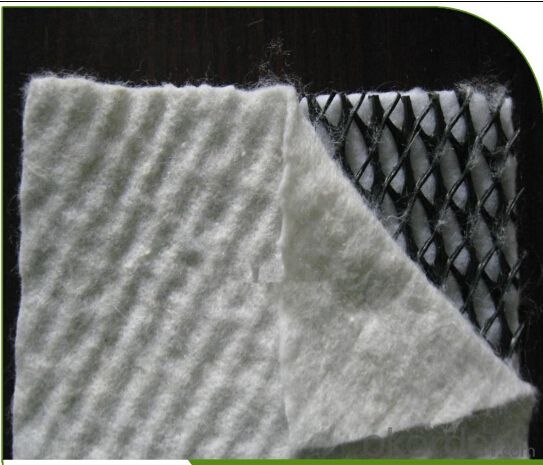
- Q: What is the purpose of using geotextiles in subgrade improvement?
- The purpose of using geotextiles in subgrade improvement is to enhance the stability and strength of the subgrade by separating and reinforcing the soil layers. Geotextiles act as a barrier, preventing the mixing of different soil types, and providing additional support to distribute loads more evenly. They also help to control the flow of water, reducing the risk of erosion and maintaining the integrity of the subgrade over time.
- Q: How do earthwork products contribute to soil erosion prevention?
- Earthwork products, such as erosion control blankets, sediment fences, and retaining walls, play a crucial role in preventing soil erosion. These products are designed to stabilize slopes, control runoff, and protect bare soil from the impacts of wind and water erosion. By providing a physical barrier, promoting water infiltration, and reducing the velocity of runoff, earthwork products help to retain soil in place, prevent sedimentation in water bodies, and promote the establishment of vegetation, ultimately minimizing soil erosion.
- Q: What are the advantages of using geotextile bags in coastal engineering projects?
- Geotextile bags offer several advantages in coastal engineering projects. Firstly, they provide effective erosion control by trapping sediment and preventing it from being washed away by waves and currents. Secondly, they can be easily filled with locally available materials, reducing the need for transportation and associated costs. Additionally, geotextile bags are flexible and can be easily adapted to fit different project requirements and site conditions. They also have a low environmental impact as they are made from permeable materials that allow for natural water and nutrient flow while providing stability. Lastly, geotextile bags are durable and long-lasting, providing a cost-effective solution for coastal protection and stabilization.
- Q: What are the benefits of using geotextile mats in geotechnical engineering projects?
- Geotextile mats offer several advantages in geotechnical engineering projects. Firstly, they enhance soil stability by acting as a separator between different soil layers, preventing their mixing and maintaining their intended functions. Secondly, these mats provide reinforcement by distributing loads over a wider area, reducing stress on the soil and increasing its load-bearing capacity. Additionally, geotextile mats act as filters, allowing water to pass through while retaining soil particles, thereby preventing erosion and promoting drainage. Lastly, they offer protection by acting as a barrier against mechanical damage, such as punctures or abrasions, extending the lifespan of the overall construction.
- Q: Advantages of the world famous universities
- Mechanical Engineering, Civil Engineering, Aerospace Engineering, Chemical Engineering, Electronic Engineering, Computer, Architecture, Mathematics, Chemistry, Physics, Earth Science, Astronomy, Marine Science, Biology, Biochemistry, Business, Economics
- Q: Can earthwork products be used in both residential and commercial projects?
- Yes, earthwork products can be used in both residential and commercial projects. Earthwork products such as soil, gravel, and rocks are commonly used in various construction projects, regardless of whether it is for residential or commercial purposes. These materials are often used for site preparation, landscaping, drainage systems, foundation construction, road construction, and more, making them versatile and suitable for both residential and commercial applications.
- Q: Are earthwork products suitable for constructing reservoirs?
- Yes, earthwork products, such as soil, clay, and rocks, are suitable for constructing reservoirs. These materials can be used to build the embankments and dams necessary for creating a reservoir. Additionally, earthwork products can be compacted and reinforced to ensure the stability and strength of the reservoir structure.
- Q: Civil engineering materials (building materials) which is the direction of civil engineering ah? structure? Geology Or what?
- At present, from the narrow sense of the definition, civil engineering is equivalent to civil engineering, that is, construction (or structural engineering) this small range. Civil Engineering Materials (Building Materials) This paper introduces the basic composition, material properties, quality requirements and testing methods of civil engineering materials commonly used in civil engineering, in
- Q: What are the advantages of using geotextile tubes for canal restoration?
- There are several advantages of using geotextile tubes for canal restoration. Firstly, geotextile tubes provide a cost-effective solution as they are typically less expensive than traditional methods such as concrete lining. Secondly, these tubes are easy to install and can be quickly deployed, saving time and labor during the restoration process. Additionally, geotextile tubes are environmentally friendly as they are made from permeable fabric that allows water to flow through while retaining sediment, preventing erosion and promoting natural habitat restoration. Lastly, these tubes are highly durable and resistant to weather and UV degradation, ensuring long-term functionality and effectiveness in canal restoration projects.
- Q: How can geopipes be used in underground stormwater retention systems?
- Geopipes can be used in underground stormwater retention systems to effectively collect and transport excess rainwater or runoff from various surfaces. These pipes help in directing the water towards a designated storage area, preventing flooding or waterlogging. The geopipes' perforated design allows water to enter while preventing debris or sediment from clogging the system. This technology enhances the efficiency of stormwater management, reducing the strain on existing drainage systems and helping to replenish groundwater reserves.
Send your message to us
Tri Dimensional Composite Drinage Geonet from 750g/m2 to 1600g/m2
- Loading Port:
- Qingdao
- Payment Terms:
- TT or LC
- Min Order Qty:
- 2000 m²
- Supply Capability:
- 200000 m²/month
OKorder Service Pledge
OKorder Financial Service
Similar products
Hot products
Hot Searches
Related keywords


